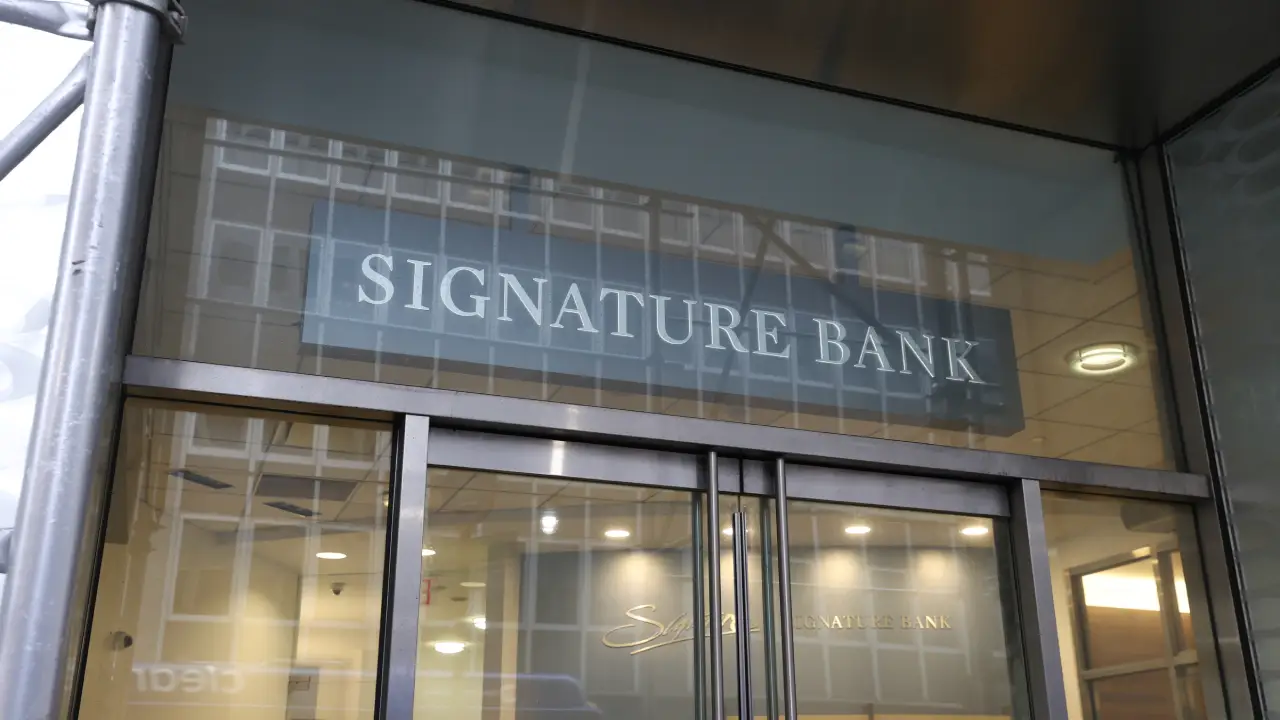The collapse of Signature Bank was due to “poor management,” according to a report from the Federal Deposit Insurance Corporation released Friday.
Bank management “did not always heed FDIC examiner concerns, and was not always responsive or timely in addressing FDIC supervisory recommendations,” the report said.
Contagion effects from Silicon Valley Bank’s failure and Silvergate Bank’s self-liquidation, which occurred just days before Signature Bank was forced to close, helped ignite the run on deposits, the FDIC report stated. But the FDIC said that was not the root cause of Signature Bank’s failures.
In particular, bank management did not fully understand the risks associated with accepting crypto deposits, which comprised more than 20% of its total deposits, the FDIC report said.
“When that industry started to turn and interest rates started to rise, those deposits started leaving the bank,” Marshall Gentry, chief risk officer at the FDIC, said on a call with reporters Friday. “Even though they were crypto cash deposits, it was a traditional kind of bank run.”
Signature Bank had $110 billion in assets at the end of 2022, making it the 29th-largest US bank. The FDIC said the bank was overreliant on uninsured deposits, which accounted for 90% of overall deposits at the end of 2022, according to FDIC quarterly banking data.
Staffing shortages at FDIC hindered oversight of bank
On the supervisory side, the FDIC acknowledged it fell short when it came to providing Signature Bank with adequate and timely reviews, citing staffing shortages at the agency.
Signature Bank was supposed to have its own examination team through the FDIC’s New York office. But since 2020, 40% of the regional office’s roles have been vacant or filled by temporary staff, according to the FDIC.
“Certain targeted reviews were not completed timely or at all because of resource shortages,” the report said.
The high cost of living in New York, salary competition from private-sector financial firms and other regulatory agencies are among the reason the FDIC is struggling to hire new talent, the agency said.
The FDIC’s report comes on the heels of the Federal Reserve’s report, which found that SVB failed due to a similar lack of internal risk management. The report also said that supervisors at the Fed “did not fully appreciate the extent of the vulnerabilities as Silicon Valley Bank grew in size and complexity.” And when they identified risks at SVB, they did not work with the bank to resolve the issues in a timely manner, the report found.
The FDIC led the investigation into Signature Bank, a New York state-charted bank, since it was the primary regulator. Signature Bank was not a member of the Federal Reserve System, and therefore was not directly regulated or supervised by the Fed, whereas SVB was.
No FDIC recommendation for stricter capital, liquidity requirements
The report noted that the speed with which depositors withdrew their money from SVB and Signature Bank was “unprecedented” and “may lead to changes in regulation,” but the FDIC didn’t provide any recommendations. That’s in stark contrast to the Fed’s report, which directly called for stricter capital and liquidity requirements.
Gentry, who oversaw the FDIC report, said examiners were working with Signature Bank to develop “greater internal controls over liquidity risk management.” He hinted that a separate FDIC report due Monday on options to reform the nation’s deposit insurance could make regulatory recommendations.
Credit crunch concerns
Rob Nichols, president and CEO of the American Banking Association, a trade group, is urging policymakers to “refrain from pushing forward new and unrelated regulatory requirements that could limit the availability of credit.” Since SVB and Signature Bank collapsed, lenders — particularly mid-size and regional banks — have had to be more selective about who they give loans to, with rising interest rates and shrinking deposits on hand.
Some lawmakers, including Massachusetts Sen. Elizabeth Warren, said the Fed’s report demands “the Fed immediately adopt stricter bank oversight and Congress swiftly strengthen bank regulations to prevent another crisis.”

